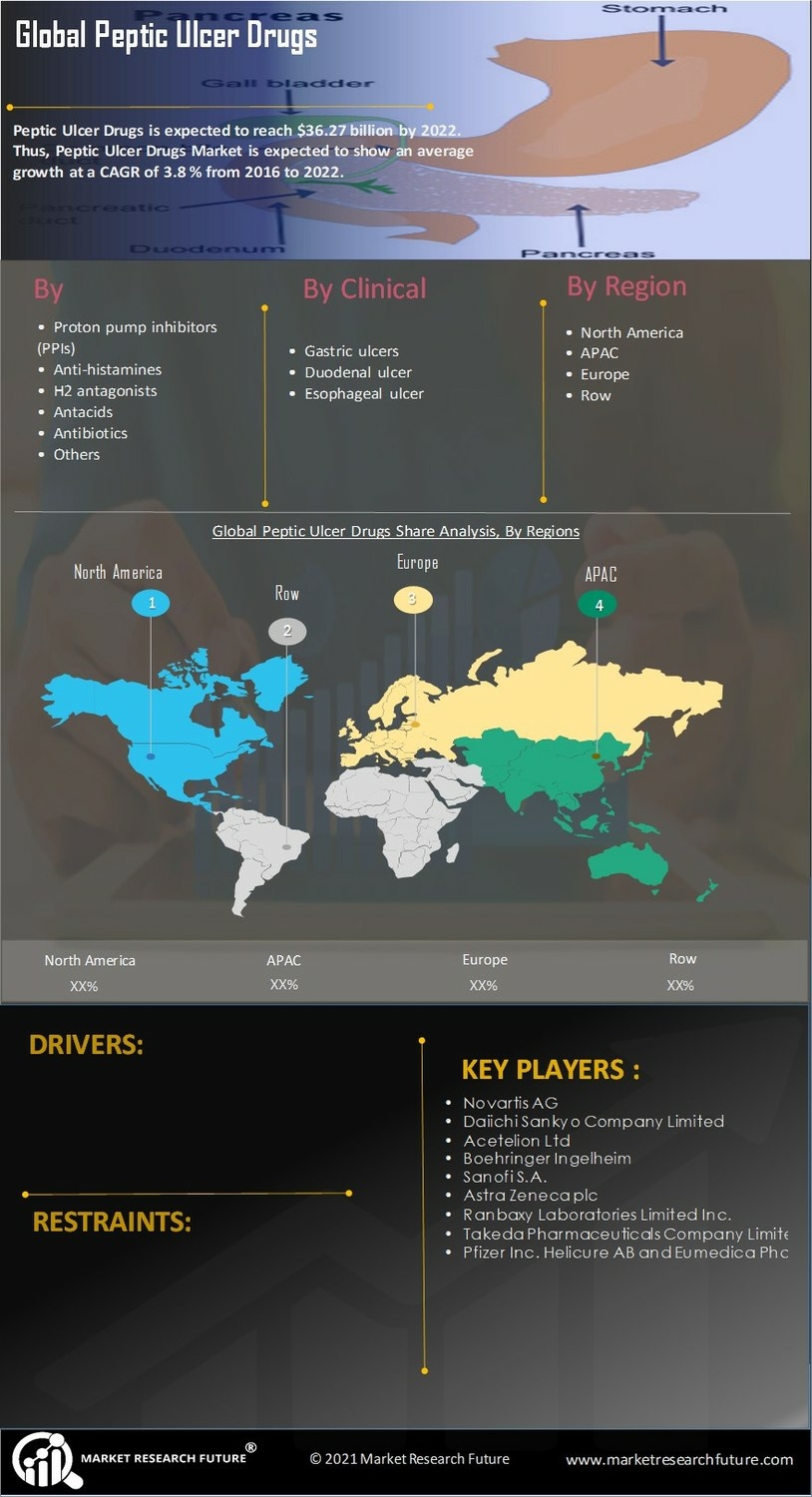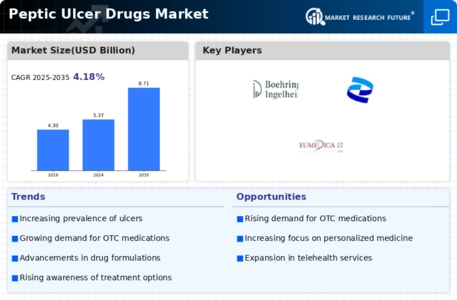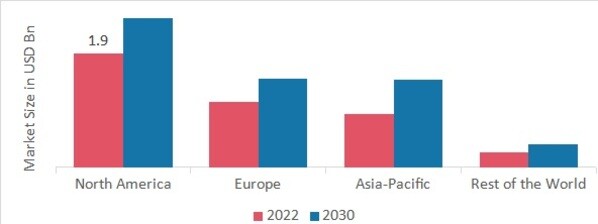Market Trends and Projections
Growing Awareness and Education
The growing awareness and education regarding peptic ulcers and their treatment options are pivotal for the Global Peptic Ulcer Drugs Market Industry. Public health campaigns and educational initiatives by healthcare organizations are helping to inform patients about the symptoms, causes, and available treatments for peptic ulcers. This increased awareness is likely to lead to earlier diagnosis and treatment, which can improve patient outcomes. As more individuals seek medical advice and treatment, the demand for peptic ulcer medications is expected to rise, thereby driving market growth. The proactive approach to patient education is essential in managing this condition effectively.
Increased Healthcare Expenditure
Rising healthcare expenditure across various regions is a significant driver for the Global Peptic Ulcer Drugs Market Industry. Governments and private sectors are investing more in healthcare systems, leading to improved access to medications and treatment options for patients suffering from peptic ulcers. This trend is particularly evident in developing countries, where healthcare reforms are underway to enhance service delivery. As healthcare spending continues to rise, the demand for peptic ulcer drugs is expected to increase, contributing to a compound annual growth rate (CAGR) of 4.49% from 2025 to 2035. This financial commitment to healthcare is likely to facilitate better management of peptic ulcer conditions.
Advancements in Drug Formulations
Innovations in drug formulations are significantly influencing the Global Peptic Ulcer Drugs Market Industry. The development of novel therapies, including proton pump inhibitors and H2-receptor antagonists, has improved treatment efficacy and patient compliance. These advancements not only enhance the therapeutic outcomes but also reduce the duration of treatment, which is appealing to both patients and healthcare providers. As a result, the market is anticipated to grow, with projections indicating a value of 8.71 USD Billion by 2035. The introduction of combination therapies may also play a crucial role in addressing the complexities of peptic ulcer disease, thereby expanding the market further.
Rising Prevalence of Peptic Ulcers
The increasing incidence of peptic ulcers globally is a primary driver for the Global Peptic Ulcer Drugs Market Industry. Factors such as stress, unhealthy dietary habits, and the widespread use of non-steroidal anti-inflammatory drugs (NSAIDs) contribute to this trend. According to health statistics, the prevalence of peptic ulcers is expected to rise, leading to a greater demand for effective treatment options. This growing patient population is likely to propel the market, which is projected to reach 5.37 USD Billion in 2024. As awareness of ulcer-related complications increases, healthcare providers are expected to prescribe more medications, further driving market growth.
Regulatory Support for Drug Approvals
Regulatory support for the approval of new drugs is a crucial factor influencing the Global Peptic Ulcer Drugs Market Industry. Regulatory bodies are streamlining the approval processes for new medications, which encourages pharmaceutical companies to invest in research and development. This supportive environment fosters innovation and the introduction of new treatment options for peptic ulcers. As a result, the market is likely to benefit from an influx of new products, enhancing competition and providing patients with more choices. The regulatory landscape is expected to evolve, further facilitating the growth of the market in the coming years.














